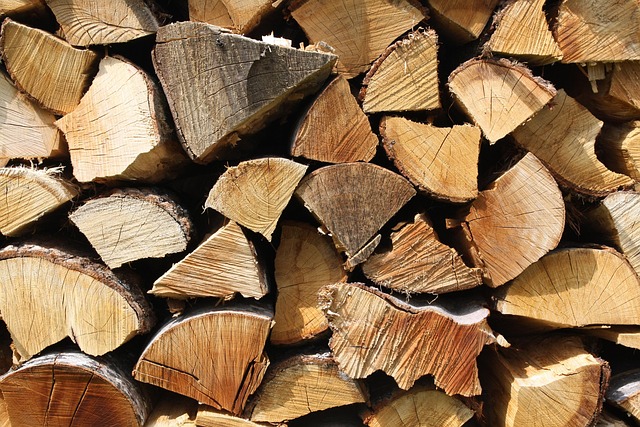Focus on fire and carbon monoxide (CO) detection for heater safety. Evaluate heaters based on their fuel type: gas or electric. Check emergency shutoff mechanisms, especially for flammable fuels. Ensure proper ventilation for gas and propane heaters. Prioritize overheating protection in all types of heaters.
When it comes to choosing a heater, safety should never be an afterthought. This guide helps you assess critical safety features that protect your home and loved ones from potential hazards. From fire and carbon monoxide detection to understanding the safety implications of different fuel types (gas vs. electric), emergency shutoff mechanisms, proper ventilation, and overheating protection—each aspect plays a vital role in creating a warm and secure environment.
- Evaluate Safety Mechanisms: Fire and Carbon Monoxide Detection
- Understand Fuel Type: Gas vs. Electric Heaters' Safety
- Examine Emergency Shutoff: Quick Response for Peace of Mind
- Check For Proper Ventilation: Preventing Hazardous Buildup
- Assess Overheating Protection: Safeguarding Against Fires
Evaluate Safety Mechanisms: Fire and Carbon Monoxide Detection

When assessing a heater’s safety features, evaluating its mechanisms for fire and carbon monoxide (CO) detection is paramount. These systems play a critical role in ensuring the well-being of occupants, especially in spaces where heaters are used extensively. Modern heaters often incorporate sophisticated sensors that can quickly identify potential hazards.
For instance, many heaters are equipped with thermal fuses designed to interrupt power and shut off the unit if temperatures reach unsafe levels. Additionally, CO detectors are integrated into some models, particularly those using fuel types like natural gas or propane, to warn against the presence of this invisible yet lethal gas, which can accumulate in enclosed spaces. These safety mechanisms collectively contribute to a more secure heating environment.
Understand Fuel Type: Gas vs. Electric Heaters' Safety

When assessing a heater’s safety features, understanding its fuel type is paramount. Gas heaters operate by burning natural gas or propane, introducing potential risks like carbon monoxide poisoning and gas leaks. These heaters typically feature safety mechanisms such as automatic shut-off valves, which detect and mitigate leaks, and flame failure devices that prevent the flow of gas if the flame extinguishes unexpectedly. Electric heaters, on the other hand, are powered by electricity and generally pose fewer safety hazards associated with fuel combustion. However, they may still carry risks like overheating, electrical fires, or shocks due to faulty wiring or worn-out components. Look for features like thermal fuses, overcurrent protection, and ground fault circuit interrupters (GFCIs) in electric heaters to safeguard against such issues.
The fuel type significantly influences the safety considerations for heaters. Gas heaters require proper ventilation and regular maintenance to ensure safe operation, while electric heaters may need periodic checks for frayed wires or damaged insulation. Understanding these distinctions empowers users to make informed decisions, ensuring heaters are chosen based on both efficiency and safety standards, especially in homes with children or elderly occupants.
Examine Emergency Shutoff: Quick Response for Peace of Mind

When assessing a heater’s safety features, one crucial aspect to look into is the emergency shutoff mechanism. This feature plays a vital role in ensuring your peace of mind, especially when it comes to heaters that use flammable fuels like gas or oil. A quick-response emergency shutoff can detect potential hazards such as leaks or excessive heat and automatically cut off the fuel supply, preventing accidents and fires.
Examine the heater’s controls and look for dedicated emergency shutdown buttons or switches. Some models may have sensors that trigger this function when certain conditions are met. This simple yet powerful safety feature is a game-changer in maintaining a safe living environment, particularly in colder regions where heaters are in constant use. By taking a few moments to understand and test these controls, you can enhance the overall security of your space, regardless of the fuel type used in your heater.
Check For Proper Ventilation: Preventing Hazardous Buildup

Proper ventilation is a critical safety feature, especially for heaters that utilize certain fuel types. Insufficient air circulation can lead to dangerous buildup of exhaust gases, posing significant health risks to occupants. When checking for proper ventilation, ensure that all vents and openings are unobstructed and connected to an exterior space. This allows for the safe dissipation of combustion byproducts, preventing toxic substances from accumulating indoors.
For heaters using fuel types like natural gas or propane, it’s essential to verify that the burner area is well-ventilated. Good ventilation not only ensures optimal heating performance but also acts as a safeguard against potential hazards. Regular maintenance, including cleaning and inspecting vents, can help maintain safe levels of oxygen supply and prevent any hazardous buildup during operation.
Assess Overheating Protection: Safeguarding Against Fires

When assessing a heater’s safety features, one crucial aspect is overheating protection. Heaters that can automatically shut off or reduce heat output in case of excessive temperature are essential to safeguard your home from potential fires caused by overheating. This is especially important when considering heaters that use different fuel types.
For instance, electric heaters and those powered by natural gas have built-in safety mechanisms like thermal fuses and temperature sensors. These components monitor the heater’s internal temperature and will promptly interrupt the heating process if it surpasses a predefined limit. This prevents the occurrence of fire hazards often associated with overheating, ensuring that your space remains a safe haven during chilly seasons.
